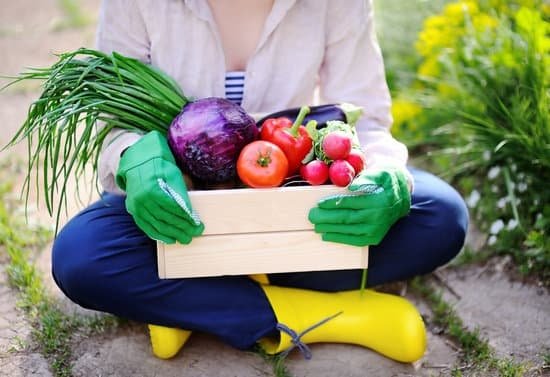Are you interested in apartment gardener ideas? With the rise of urban living, many people are turning to apartment gardening as a way to bring greenery and nature into their living spaces.
Whether you have a balcony, small patio, or just a sunny window, there are plenty of creative ways to cultivate your own indoor garden. In this article, we will explore the benefits of apartment gardening, space-saving tips, container and vertical gardening ideas, as well as low-maintenance plant varieties and DIY projects for creating a thriving garden in your apartment.
With more and more people living in urban areas, apartment gardening has become a popular trend for city dwellers looking to connect with nature in a limited space. Not only does apartment gardening provide a sense of tranquility and beauty to your home, but it also offers numerous health benefits. From improving air quality to reducing stress levels, apartment gardening can greatly enhance the overall well-being of urban residents.
One of the biggest challenges of apartment gardening is making the most of limited space. However, with some strategic planning and creativity, it is possible to create a stunning garden even in the smallest of spaces. From utilizing wall space for vertical gardens to choosing the perfect containers for your plants, there are plenty of space-saving tips that can help you maximize your apartment garden.
Benefits of Apartment Gardening
Apartment gardening has become increasingly popular in urban areas, as more and more people are choosing apartment living over traditional homes. There are numerous benefits to apartment gardening that specifically cater to the needs of urban dwellers. Whether it’s the desire to have a green space in the midst of a concrete jungle or the opportunity to grow their own produce, apartment gardening provides a range of advantages for those living in small spaces.
One of the key benefits of apartment gardening is the ability to have access to fresh, home-grown produce. Even with limited space, apartment gardeners can grow herbs, fruits, and vegetables right on their balcony or windowsill. This not only allows urban dwellers to enjoy organic and flavorful food but also reduces their carbon footprint by decreasing the need for transportation and packaging of store-bought produce.
Another advantage of apartment gardening is its positive impact on mental health. Tending to plants and watching them grow can be incredibly therapeutic, providing city dwellers with a sense of calm and relaxation amidst the hustle and bustle of urban life. Additionally, having greenery indoors has been shown to improve air quality, making it beneficial for overall well-being.
Lastly, apartment gardening promotes sustainability by encouraging individuals to be more mindful of their environmental impact. By composting organic waste, using rainwater for irrigation, and choosing low-maintenance plants that require less water and resources, apartment gardeners contribute to a more sustainable way of living within an urban setting. These eco-friendly practices not only benefit individual residents but also contribute to creating greener and healthier cities overall.
- Cost-effective: Apartment gardening can save money on groceries
- Health benefits: Enjoying fresh air & sunshine while tending your garden
- Eco-friendly: Reducing your carbon footprint & promoting sustainability
Space-Saving Tips
Use Vertical Space
One of the best ways to maximize space in an apartment garden is to utilize vertical space. Hanging planters, wall-mounted shelves, and trellises can all be used to grow plants upwards instead of outwards. This not only saves floor space but also creates a visually appealing display of greenery.
Multi-Level Planters
Another space-saving idea for apartment gardener ideas is to use multi-level planters. These tiered planters allow you to stack plants on top of each other, effectively doubling or tripling your growing space without taking up more room on the ground.
Utilize Windowsills and Balcony Rails
Windowsills and balcony rails are often overlooked when it comes to apartment gardening, but they can actually provide valuable growing space. Consider adding window boxes or railing planters to these areas to grow herbs, flowers, or small vegetables.
By implementing these space-saving tips, apartment dwellers can create lush and productive gardens even with limited square footage. With a little creativity and strategic planning, anyone can enjoy the benefits of gardening regardless of their living situation.
Container Gardening
When it comes to apartment gardening, choosing the right containers is essential for the success of your garden. The good news is that there are plenty of options available, allowing you to showcase your green thumb even in a limited space.
One popular choice for apartment gardeners is using hanging baskets or window boxes. These options are great for growing trailing plants like ivy or petunias, adding a touch of natural beauty to your windows and balconies. Another creative option is repurposing everyday items like tin cans, buckets, or wooden crates as planters. Not only are these containers affordable, but they also give a rustic and charming look to your garden.
In addition to aesthetics, it’s important to consider the practical aspects of container gardening. Select containers that have drainage holes to prevent waterlogged soil and root rot. Also, think about the size of the containers in relation to the plants you want to grow – larger ones allow for more root growth and stability for taller plants.
Here’s a helpful tip: When selecting containers for your apartment garden, prioritize lightweight materials like plastic or fiberglass if weight is a concern for your balcony or deck. Remember, no matter which type of container you choose, make sure it suits your space and adds visual appeal to your apartment garden.
| Container Option | Advantages |
|---|---|
| Hanging Baskets/Window Boxes | Ideal for trailing plants and adds beauty to windows/balconies. |
| Repurposed Items (tin cans, buckets, wooden crates) | Affordable and gives a charming look to the garden. |
| Lightweight Materials (plastic or fiberglass) | Suitable for small spaces with weight restrictions. |
Vertical Gardening
One of the biggest challenges for apartment gardeners is making the most of the limited space available to them. Vertical gardening offers a creative solution to this problem by utilizing wall space for greenery. By growing plants vertically, apartment dwellers can maximize their growing area and add a lush, natural element to their living spaces.
There are numerous ways to implement vertical gardening in an apartment setting. One popular method is using wall-mounted planters or hanging pots to create a cascading effect with your plants. This not only adds visual interest, but also allows for more plants to be grown in a smaller footprint. Another option is installing a trellis or vertical garden structure that can support climbing plants such as ivy, pothos, or even small vegetables like cherry tomatoes.
In addition to being space-saving, vertical gardening can also provide additional benefits such as improved air quality and insulation for your apartment. Plants on walls can help absorb indoor air pollutants and regulate humidity levels. With the right setup, an apartment balcony or wall can be transformed into a vibrant oasis of greenery and fresh air.
| Advantages | Examples |
|---|---|
| Maximizes limited space | Wall-mounted planters, hanging pots, trellises |
| Improves air quality | Ivy, pothos, cherry tomatoes |
| Adds visual interest | Cascading effect with plants |
Apartment-Friendly Plants
Apartment gardening is a growing trend among urban dwellers who want to bring some greenery into their living spaces. One of the key factors in successful apartment gardening is choosing the right plants that are low-maintenance and compact enough to thrive in limited space. Fortunately, there are plenty of apartment-friendly plants that fit the bill, and with the right care, they can flourish indoors.
Popular Apartment-Friendly Plants
Some popular choices for apartment gardening include succulents, air plants, snake plants, and spider plants. These plants are known for their ability to thrive in indoor environments with minimal maintenance. They require little water and can tolerate low light conditions, making them perfect for apartment living.
Tips for Choosing Apartment-Friendly Plants
When selecting plants for your apartment garden, consider factors such as natural light availability, humidity levels, and temperature. It’s also important to consider the size of the plant and how much space it will take up in your apartment. Compact varieties that can be placed on windowsills or small shelves are ideal for apartment gardening.
Caring for Apartment-Friendly Plants
Once you’ve chosen the right plants for your apartment garden, it’s important to provide them with proper care. This includes watering them according to their specific needs, ensuring they receive adequate sunlight, and monitoring for any signs of pests or disease. With a little attention and care, apartment-friendly plants can thrive and bring life to any indoor space.
By choosing low-maintenance and compact varieties of plants for your apartment garden, you can create a lush and thriving indoor oasis without a lot of effort. Whether you’re new to gardening or have limited space to work with, these types of plants are an excellent choice for bringing greenery into your apartment.
DIY Garden Projects
For apartment dwellers, the limited space can be a challenge when it comes to gardening. However, there are plenty of creative and functional DIY garden projects that can be done to make the most of your apartment garden. Here are some ideas to inspire your green thumb:
- Vertical herb garden: Utilize a wooden plank or hanging shoe organizer to create a vertical herb garden that not only saves floor space but also adds a touch of greenery to your kitchen.
- Succulent wall art: Get creative with succulents by planting them in picture frames or shadow boxes to create living wall art. This low-maintenance project adds visual interest to any room.
- Upcycled planters: Repurpose mason jars, tin cans, or old bottles as planters for your apartment garden. Not only is this an eco-friendly option, but it also adds a unique touch to your indoor oasis.
These DIY garden projects not only add greenery to your living space but also provide a sense of accomplishment and personalization to your apartment gardener ideas. Don’t be afraid to get creative and think outside the box when it comes to bringing nature into your home.
Balcony Garden Inspiration
Transforming a small balcony into a lush oasis can be a rewarding project for apartment dwellers who want to enjoy outdoor green space. With the right apartment gardener ideas, even the tiniest balcony can become a beautiful and functional garden. One of the most important considerations when planning a balcony garden is maximizing the use of vertical space. This can be achieved by using hanging planters, wall-mounted shelves, and trellises to make use of every inch of available space.
When it comes to choosing plants for a balcony garden, it’s essential to select varieties that are well-suited for container gardening and can thrive in a limited amount of soil. Some apartment-friendly plants that are perfect for balconies include dwarf citrus trees, herbs, succulents, and compact flowering plants. These plants not only add beauty to the balcony but also provide opportunities for homegrown produce or aromatic herbs for cooking.
In addition to plant selection, incorporating outdoor furniture such as small bistro sets, foldable chairs, or comfortable cushions can turn the balcony into an inviting space for relaxation and entertainment. By adding elements such as string lights, lanterns, or colorful outdoor rugs, the balcony can be transformed into an extension of indoor living spaces. With careful planning and creative thinking, apartment dwellers can turn their balconies into tranquil retreats that provide an escape from urban life.
Expert Tips for Apartment Gardening Success
In conclusion, apartment gardening has become increasingly popular in urban areas due to its numerous benefits and the creative use of limited space. By utilizing space-saving tips, container gardening, vertical gardening, and choosing the right plants, apartment dwellers can create their own green oasis.
In addition to these ideas, DIY garden projects can be both functional and aesthetically pleasing. These creative projects not only enhance the beauty of an apartment garden but also provide a sense of accomplishment for the gardener. Furthermore, transforming balconies into lush oases provides a serene outdoor retreat in the midst of a bustling city.
Lastly, seasoned apartment gardeners offer valuable expert tips for success. Whether it’s advice on proper plant care or innovative solutions for common challenges, learning from their experience can help novice apartment gardeners thrive in their urban gardening endeavors.
Overall, with these apartment gardener ideas and expert tips at hand, even those with limited space can enjoy the benefits of gardening and create beautiful green spaces within their urban homes.
Frequently Asked Questions
What Is the Best Plant to Grow in an Apartment?
The best plant to grow in an apartment is a low-maintenance one that thrives indoors, such as a snake plant, pothos, or peace lily. These plants require minimal sunlight and care, making them ideal for apartment living.
How Do You Start a Garden for Beginners in an Apartment?
Starting a garden for beginners in an apartment can be done using containers or small pots to grow herbs, vegetables, or flowers. Choose a sunny spot near a window, ensure proper drainage for the pots, and water regularly to kick off your indoor garden.
How Do You Have a Garden if You Live in an Apartment?
Having a garden while living in an apartment is possible by utilizing vertical space with hanging planters or wall-mounted pots. Balconies and windowsills can also be used to grow plants in containers. Consider the amount of sunlight available and choose suitable plants for your space.

Welcome to my gardening blog! I am passionate about plants and enjoy sharing my knowledge and experiences with others. In this blog, I will write about everything related to gardening, from tips on how to get started to updates on my own garden projects.





